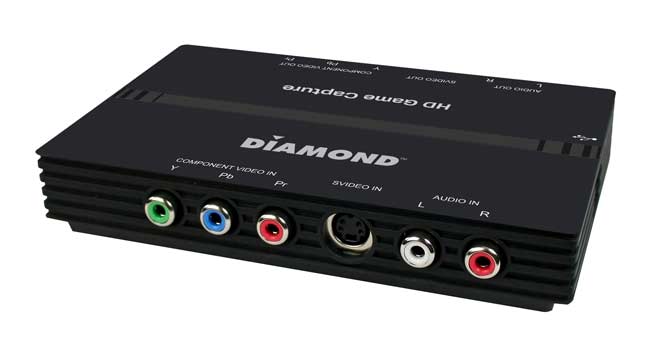

- #Diamond video capture devices how to#
- #Diamond video capture devices generator#
- #Diamond video capture devices serial#
- #Diamond video capture devices Pc#
In November the following year, LSI’s ANTIC (Alphanumeric Television Interface Controller) and CTIA/GTIA co-processor (Color or Graphics Television Interface Adaptor), debuted in the Atari 400.
#Diamond video capture devices generator#
Motorola added the MC6847 video display generator later the same year, which made its way into a number of first generation personal computers, including the Tandy TRS-80.Ī similar solution from Commodore’s MOS Tech subsidiary, the VIC, provided graphics output for 1980-83 vintage Commodore home computers. This became the basis for the IBM PC’s Monochrome and Color Display Adapter (MDA/CDA) cards of 1981, and provided the same functionality for the Apple II. In 1978, Motorola unveiled the MC6845 video address generator. Development of the TIA was led by Jay Miner, who also led the design of the custom chips for the Commodore Amiga computer later on. The video chip was quickly followed a year later by the Television Interface Adapter (TIA) 1A, which was integrated into the Atari 2600 for generating the screen display, sound effects, and reading input controllers.

RCA’s “Pixie” video chip (CDP1861) in 1976, for instance, was capable of outputting a NTSC compatible video signal at 62x128 resolution, or 64x32 for the ill-fated RCA Studio II console.
#Diamond video capture devices serial#
The incoming data stream was converted into serial bitmapped video output such as luminance, color, as well as vertical and horizontal composite sync, which kept the line of pixels in a display generation and synchronized each successive line along with the blanking interval (the time between ending one scan line and starting the next).Ī flurry of designs arrived in the latter half of the 1970s, laying the foundation for 3D graphics as we know them.

They acted as a pass-through between the main processor and the display.

The first true 3D graphics started with early display controllers, known as video shifters and video address generators. Going from the early days of 3D consumer graphics, to the 3Dfx Voodoo game-changer, the industry's consolidation at the turn of the century, and today's modern GPGPU.ġ976 - 1995: The Early Days of 3D Consumer Graphics This is the first installment on a series of five articles that in chronological order, take an extensive look at the history of the GPU.
#Diamond video capture devices Pc#
While 3D graphics turned a fairly dull PC industry into a light and magic show, they owe their existence to generations of innovative endeavour. The early graphics systems featured a fixed function pipeline (FFP), and an architecture following a very rigid processing path utilizing almost as many graphics APIs as there were 3D chip makers.
#Diamond video capture devices how to#
From how to implement the hardware, to the use of different rendering techniques and their application and data interfaces, as well as the persistent naming hyperbole. The early days of 3D consumer graphics were a Wild West of competing ideas. 3D gaming and virtualization PC graphics eventually coalesced from sources as diverse as arcade and console gaming, military, robotics and space simulators, as well as medical imaging. The graphics industry that existed before that largely consisted of a more prosaic 2D, non-PC architecture, with graphics boards better known by their chip’s alphanumeric naming conventions and their huge price tags. The evolution of the modern graphics processor begins with the introduction of the first 3D add-in cards in 1995, followed by the widespread adoption of the 32-bit operating systems and the affordable personal computer.


 0 kommentar(er)
0 kommentar(er)
